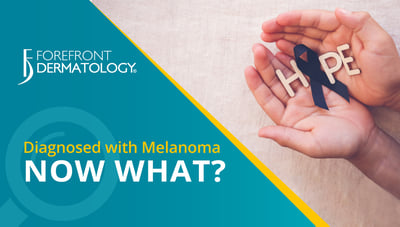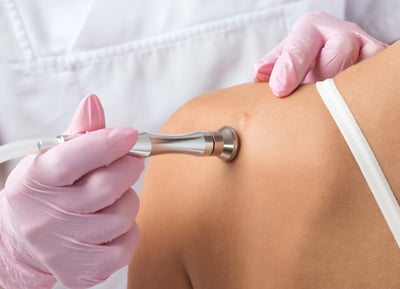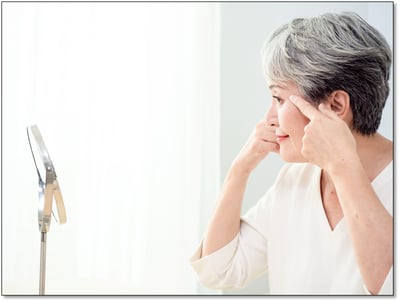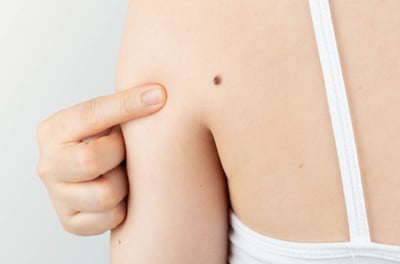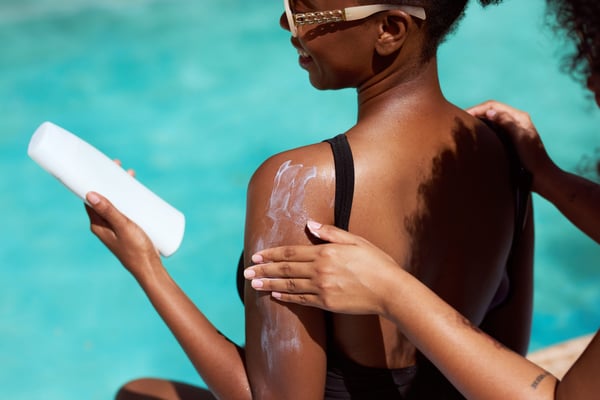
Are you at risk for skin cancer? You could be: After all, it’s the most common form of cancer worldwide… but not everyone shares the same level of risk. While anyone can develop skin cancer, scientific research has identified several factors that significantly increase a person’s chances. Understanding these risks is essential for prevention and early detection.
Here’s what the science says about who is most at risk for skin cancer—and what you can do to protect yourself.
What you should know about skin cancer risk factors
Watch out for skin cancer myths like “Tanning beds are a safe alternative to sun tanning” and “People of color have zero risk when it comes to skin cancer.” There’s a lot of misinformation out there, but our board-certified dermatologists have done a deep dive into the science to summarize the various risk factors for melanoma and other skin cancers:
1. Our fair-skinned friends
One of the most significant risk factors for skin cancer is skin type. Individuals with fair skin, freckles, light hair (blonde or red), and light eyes (blue or green) have less melanin, a pigment that helps protect the skin from ultraviolet (UV) radiation. According to the American Cancer Society, people with lighter complexions are much more likely to develop all forms of skin cancer, including basal cell carcinoma, squamous cell carcinoma, and melanoma.
2. Too much fun in the sun
UV radiation from the sun is a major contributor to skin cancer. Whether you spend long hours outdoors for work or recreation, unprotected exposure increases your risk. This includes people living in sunny climates or high altitudes with more intense UV rays. A personal history of frequent sunburns, especially blistering burns in childhood, is strongly associated with an increased risk of melanoma.
3. Glow-up in a tan trap
Indoor tanning can be particularly dangerous. The World Health Organization classifies tanning beds as carcinogenic (having the potential to cause cancer) to humans. The Skin Cancer Foundation shows that using tanning beds before the age of 35 increases melanoma risk by as much as 75%. Despite awareness campaigns, indoor tanning remains popular in some demographics, especially young women, which contributes to rising melanoma rates.
4. Family or personal history of skin cancer
Genetics plays a role, too. If you’ve had skin cancer before, you’re more likely to develop it again. Similarly, having a close family member with a history of melanoma or other skin cancers may indicate a hereditary predisposition. This could be due to inherited genetic mutations or shared lifestyle and environmental exposures.
5. Weakened immune systems
Individuals with compromised immune systems, such as organ transplant recipients, HIV-positive individuals, or those undergoing chemotherapy, are at heightened risk for skin cancer. Their bodies are less equipped to repair DNA damage caused by UV rays or to fend off abnormal cell growth.
6. Age and skin cancer
While it can affect people of any age, the risk for skin cancer increases with age. This is partly due to cumulative sun exposure over time and a natural decline in the skin’s ability to repair itself. That said, skin cancer is increasingly being diagnosed in younger people, especially melanoma.
7. Freckle fan club with VIP moles
Having many moles, especially atypical or dysplastic moles, increases your risk of melanoma. These moles tend to be larger, irregular in shape, and uneven in color. Regular self-exams and dermatologist visits are essential if you fall into this category.
Lowering your skin cancer risk
While it’s impossible to change your genetics or skin type, you can reduce your risk of skin cancer by:
- Using broad-spectrum sunscreen daily (SPF 30 or higher)
- Wearing protective clothing, hats, and sunglasses
- Find yourself some shade during peak sun hours (10 a.m. to 4 p.m.)
- Avoiding indoor tanning
- Give yourself regular skin self-exams
- Seeing a dermatologist for annual skin checks
Skin cancer doesn’t discriminate: get checked out
Science has made it clear that certain groups carry a higher risk, but that doesn’t mean you’re off the hook if you don’t fit in these typical categories. The good news? Most skin cancers are preventable and highly treatable when caught early. Awareness is your first line of defense, so book an appointment with us today, and we can get you checked out. We want you to know your risks, protect your skin, and inspire your family and friends to do the same.
